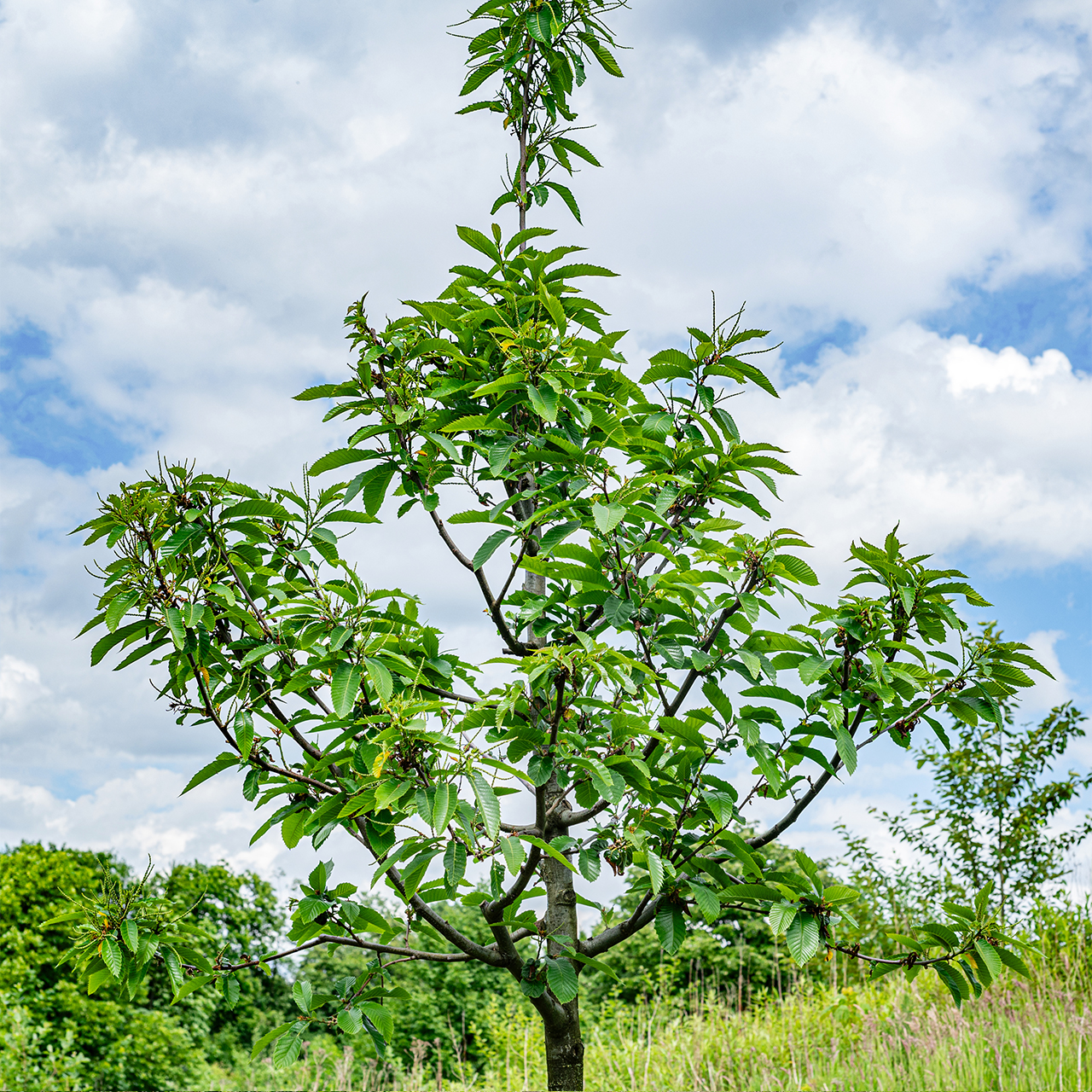Sweet chestnut
The sweet chestnut is also known as the Spanish chestnut or just chestnut. It is very popular because of the edible nuts it produces. With its lush flowers, the sweet chestnut is also a source of food for many insects. The tree species from southern Europe is mainly used for agricultural purposes and has been cultivated for a long time for its starchy nuts. It was named Tree of the Year in 2018.
Sweet chestnut (Castanea sativa)
| Family: | Fagaceae – Beech |
| Distribution: | In particular southern Europe, also in parts of Germany |
| Size: | Max. 15–35 metres in height and 10–20 metres in breadth |
| Life: | Up to 200 years |
| Requirements: | Sun to partial shade; it is heat-loving and very heat-tolerant, moderately frost-hardy, tolerates urban climates, is wind-resistant and is resilient in industrial environments |
| Soil: | Fresh to dry soils, permeable, acidic or neutral substrates, frost-sensitive on heavy soils, tolerates salt to some extent |
| Benefits: | Bee pasture, edible nuts |
From black gold to blue gold
RAG is responsible for fulfilling the perpetual obligations on behalf of the RAG-Stiftung. In the Ruhr region, an underground network of inlets and waterways means that pit water management can be concentrated at six sites in the future. Where black gold was once mined, blue gold is now being protected. With its water management concept, RAG now reduces pollution in around 240 kilometres of watercourses in the Ruhr region. The quality of the water is examined at short intervals by an independent institute.
In some places, the changes caused by mining are also accompanied by positive effects: For example, depressions due to mining have evolved into wetlands with rich fauna and flora. There are also interesting prospects from the use of geo-monitoring and state-of-the-art measurement technology. The data obtained can also be utilised outside post-mining activities in the medium term – for example, in agriculture and forestry, where raised ground water and surface water can help minimise damage caused by drought. Or in developing models that enable better forecasting and protection against hazards resulting from extreme weather events such as heavy rain.
Occasion for planting
In March 2023, the last of what used to be four sites for discharging pit water into the Emscher was decommissioned. Since then, the river has been free of pit water for the first time in over 100 years. The RAG-Stiftung planted this tree to commemorate this important milestone and the special responsibility we all have to preserve our ecosystems.

